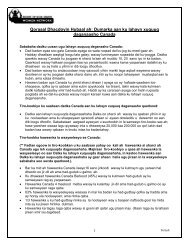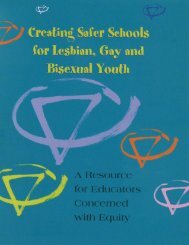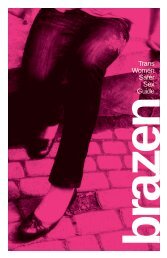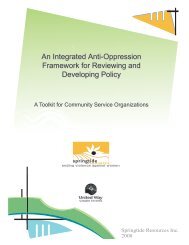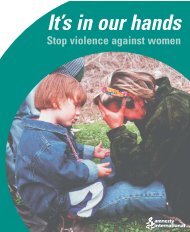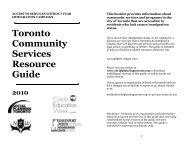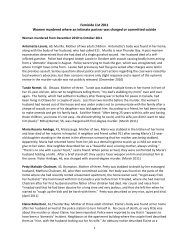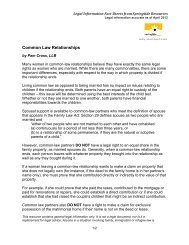Little eyes, little ears - Agence de la sante publique du Canada
Little eyes, little ears - Agence de la sante publique du Canada
Little eyes, little ears - Agence de la sante publique du Canada
Create successful ePaper yourself
Turn your PDF publications into a flip-book with our unique Google optimized e-Paper software.
<strong>little</strong> <strong>eyes</strong>,<strong>little</strong> <strong>ears</strong>Roles children may assume 3, 8In our family, we adopt orare given “roles” we willinglyor unconsciously p<strong>la</strong>yExamples of family roles are the mediator of disputes,the “baby” of the family, the prized child who can do nowrong, the responsible one on whom everyone relies,or the “b<strong>la</strong>ck sheep” who does not fit in and is expectedto disappoint the others.Roles that <strong>de</strong>velop or are assigned in familiescharacterized by woman abuse reflect the uniqueways each person adapts and copes with the secret,confusing, and dangerous situation in which they live.Key points about family roles...• a role may be imposed on the child orit may be assumed by the childchildren can p<strong>la</strong>y more than one role• children may p<strong>la</strong>y roles before, <strong>du</strong>ringor in the aftermath of violence 16• <strong>du</strong>ring abusive inci<strong>de</strong>nts, child might p<strong>la</strong>ythe referee, rescuer, <strong>de</strong>flector/distractor,or caretaker of younger siblings• a child may use the role as a strategy to cope,so it might not be turned off overnight oncethe abuser is gone• roles assigned by the abuser can lead to guilt,grief and other hurtful emotions, especiallyafter he leavesExamining family rolesis important because...• ithelps us un<strong>de</strong>rstand how a child interpretsand copes with violence (so we can interveneeffectively)• ithelps us un<strong>de</strong>rstand how different childrenin the same family can have dramaticallydifferent un<strong>de</strong>rstandings of what happenedin their homes• it• ithelps us un<strong>de</strong>rstand how a child maythink and feel once the abuser is goneis a framework for un<strong>de</strong>rstanding howtension can occur between siblings orin the mother-child re<strong>la</strong>tionship• rolei<strong>de</strong>ntities formed in childhood areoften used into a<strong>du</strong>lthood 16For example, children who adopt pseudo-a<strong>du</strong>lt roles suchas the “caretaker” may have difficulty adjusting whenexpected to assume the role of child once again. The“abuser's ally” may take up the role of the now-absentabuser. The “scapegoat” child's iso<strong>la</strong>tion within the familymay be intensified by feelings of responsibility for themarital break-up. The “perfect child” may be impatientwith and b<strong>la</strong>ming towards siblings who misbehaved orotherwise “triggered” abuse by the abuser.Assessing the role of each child can be helpfulwhen families continue to struggle with conflict orabuse even after the abusive man has left the home.26



